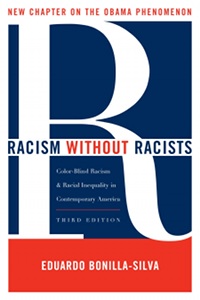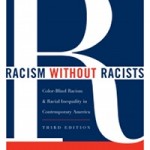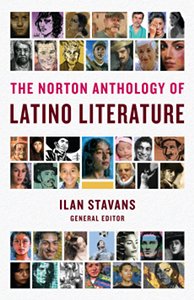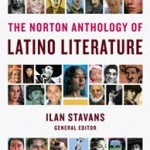Posted by Elena del Valle on September 10, 2010

Racism without Racists book cover
Photos: Rowman & Littlefield Publishers, Inc.
In the first edition of Racism without Racists Color-Blind Racism and Racial Inequality in Contemporary America (Rowman and Littlefield) Eduardo Bonilla-Silva, Ph.D., professor of sociology at Duke University, shared his concerns about what he describes as “the new racial ideology,” how he believes the new system has replaced the old system and is as effective. In the second edition of the book, he expanded on the issue by addressing his views of a growing fissure of race stratification similar to the one he believes exists in Latin America’s pluralistic societies.
In the third edition of the book, published earlier this year, he added a section about what he calls the Obama Phenomenon. He also discusses conservative minorities that make their living (or their fortune) defending what some consider views unfavorable to the minority group or groups they should identify with because of their race and cultural background.
The 301-page softcover book is divided into 10 chapters: The Strange Enigma of Race in Contemporary America, The Central Frames of Color-Blind Racism, The Style of Color Blindness: How to Talk Nasty About Minorities without Sounding Racist, “I Didn’t Get That Job Because of a Black Man”: Color Blind Racism’s Racial Stories, Peeking Inside the (White) House of Color Blindness: The Significance of Whites’ Segregation, Are All Whites Refined Archie Bunkers? An Examination of White Racial Progressives, Are Blacks Color Blind, Too?, E Pluribus Unum or The Same Old Perfume in a New Bottle? On the Future of Racial Stratification in the United States, Will Racism Disappear in Obamerica? The Sweet (but Deadly) Enchantment of Color Blindness in Black Face, and Conclusion: “The (Color-Blind) Emperor Has No Clothes:” Exposing the Whitness of Color Blindness.
One chapter from the previous edition, Chapter 10, the appendix with the interview schedule for the 1998 DAS and the postscript for the text were removed. They are available on the publisher’s website, according to the author’s Preface.

Author Eduardo Bonilla-Silva
Bonilla-Silva believes President Barack Obama and his regime represent the “new racism” and that his policies represent the color-blind ideology he outlines in his book. In addition, Bonilla-Silva outlines his belief in the book in the idea that the President’s policies and the way others are framing his government may further precipitate what the author sees as the country’s Latin America like racial stratification.
In addition to this book Bonilla-Silva is the author or co-author of White Supremacy and Racism in the Post Civil Rights Era, White Out, and White Logic White Methods: Racism and Methodology. His next book is titled The Invisible Weight of Whiteness: The Racial Grammar of Everyday Life in the U.S.A.

Click here to buy Racism without Racists
Comments:
Filed Under: Books
Posted by Elena del Valle on September 8, 2010
Part two of a series
By Hilda Luisa Díaz-Perera

Hilda Luisa Díaz-Perera
Where did the guayabera come from and is there a history behind it? Most of the time, where it concerns popular history, those who have made a difference in the lives of millions of people were never aware of it, and therefore the facts of whatever they contributed to mankind is lost in the jumble of reality, fiction and, in the case of the guayabera, in the fantasy of romance.
According to research conducted by Cuban journalist Pedro Carballo Bernal, several Andalusian and later Canary Island families who settled in Cuba around the Yayabo River, in Sancti Spiritus, began making shirts that would eventually become the precursors or prototypes of today’s guayaberas. More precisely, as the story goes, the first guayabera was made in 1709, by Encarnación Núñez García, an Andalusian wife from the town of Granada, hoping to please her husband, José Pérez Rodríguez, a potter by trade, who requested that she make him comfortable, loose shirts from a bolt of fine Belgian linen they had received from Spain.
Click here to read parts one and two of La Guayabera, a multi-part series
Posted by Elena del Valle on September 3, 2010

The Norton Anthology of Latino Literature
Photo: Sam Masinter
A compendium of the Latino literary tradition, The Norton Anthology of Latino Literature (W. W. Norton; $59.95) is due to be published in hardcover September 13, 2010. The heavy hardcover book has 2,489 pages plus 177 appendix pages. The book features the work of 201 Latino writers from Chicano, Cuban-American, Puerto Rican, and Dominican-American traditions, and writing from other Spanish-speaking countries. Works from writers of Brazil, Portugal and the Philippines were excluded.
Ilan Stavans, a cultural critic and Lewis Sebring Professor of Latin American and Latino Culture at Amherst College, was the general editor of the title which traces five centuries of writing, from letters to the Spanish crown by sixteenth-century conquistadors to the expressions of twenty-first-century cartoonists and artists of reggaeton. It took 13 years to gather the information and make the book a reality.
The book is divided into six chronological sections: Colonization, Annexation, Acculturation, Upheaval, Into the Mainstream, and Popular Tradition and includes samples of the work of José Martí, William Carlos Williams, Julia Alvarez, Oscar Hijuelos, Cristina García, Piri Thomas, Esmeralda Santiago, and Junot Díaz. Three appendices, Chronology-Literature and History; Treaties, Acts and Propositions; and Influential Essays by Latin American Writers precede a Selected Biography section.
The selection was based on four thematic emphases: identifying Latinos for purposes of the book as those writers from Spanish speaking countries living in the United States regardless of the length of time they resided in the country or their race while taking into account that the events and circumstances of more than one nation may have influenced some of the authors.

Ilan Stavans, general editor, The Norton Anthology of Latino Literature
Mexico City born Stavans, a writer and public television host, authored Growing Up Latino and Spanglish. He lives in Amherst, Massachusetts. Other editors listed at the beginning of the book are: Edna Acosta-Belén, a Distinguished Professor of Latin American, Caribbean, and U.S. Latino Studies and Women’s Studies, University of Albany, State University of New York; Harold Augenbraum, executive director, National Book Foundation; María Herrera-Sobek, associate vice chancellor for Diversity, Equity and Academic Policy and professor in the Department of Chicana and Chino Studies, University of California, Santa Barbara; Rolando Hinojosa, Ellen Clayton Garwood Professor of Creative Writing, University of Texas at Austin; and Gustavo Pérez Firmat, David Feinson Professor of Humanities, Columbia University.

Click here to buy The Norton Anthology of Latino Literature
Comments:
Filed Under: Books
Posted by Elena del Valle on September 1, 2010
Part one of a series
By Hilda Luisa Díaz-Perera

Hilda Luisa Díaz-Perera
Salsa is Cuban. The bolero is Cuban. So is a cigar worthy of the name, the Cuba Libre, the mojito and also, believe it or not, the guayabera. I can’t remember life without it. I bought my Chinese-Cuban-American grandson his first guayabera, the tiniest thing, when he was barely a few days old: “Little man” I said, “Welcome to our culture!”
The guayabera is solidly etched in the psyche of a Cuban woman of my generation. I think most of us are emotionally bound to it through memories we hold very dear of fathers, grandfathers, and older family patriarchs wearing them. I can remember the day my then young and very conservative grandfather, finally gave in to my grandmother’s pleas to wear long-sleeved guayaberas instead of sitting through his meals fully suited, in the hot, Cuban weather.
Click here to read the entire article La Guayabera, part of a multi-part series.

















